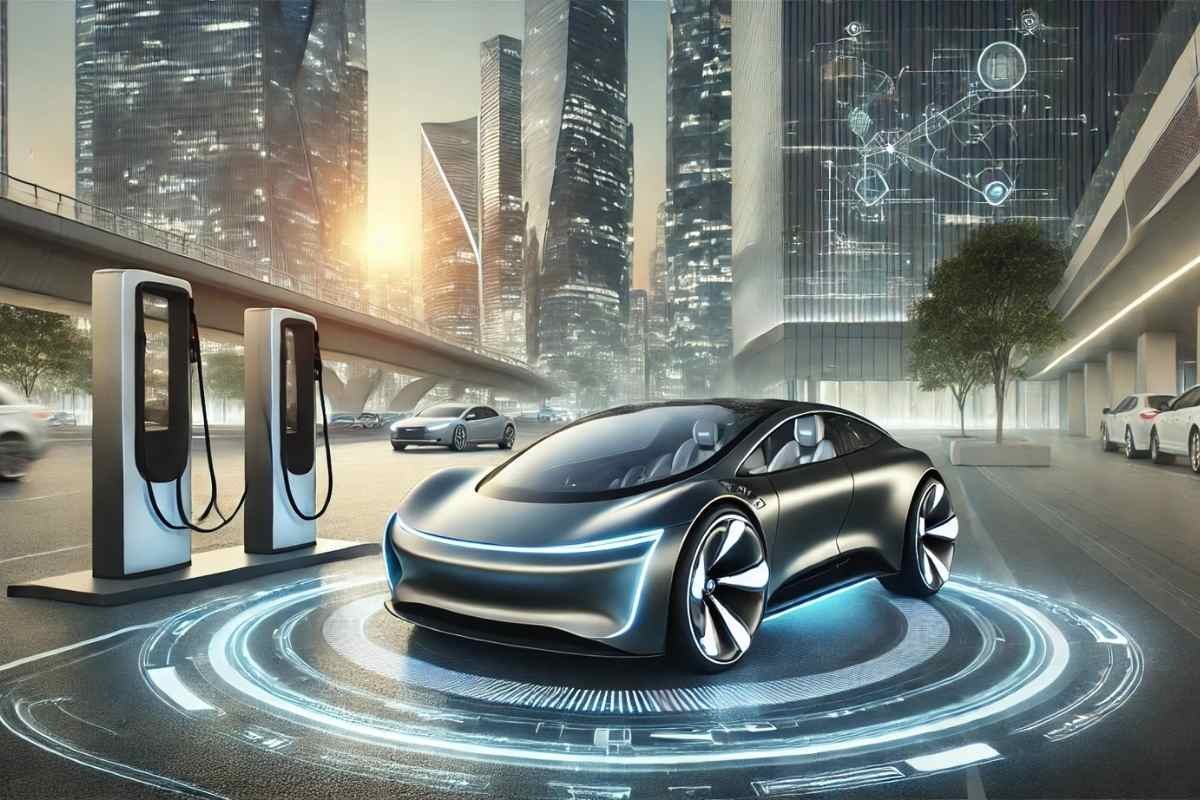India is experiencing a transformative shift in its automobile industry, driven by the rapid adoption of electric vehicles (EVs). This transition is fueled by favorable government policies, rising environmental awareness, and technological advancements.
The History of Electric Vehicles (EVs) in India
- Early Beginnings (1990s)
India’s journey with electric vehicles began in the 1990s, primarily with small electric scooters and three-wheelers designed to combat urban pollution. However, the lack of infrastructure, underdeveloped battery technology, and minimal government support made it difficult for these vehicles to gain popularity.
- The Reva Era (1996)
A significant milestone was the introduction of the Reva by the Maini Group in Bangalore in 1996. This small, two-seater, battery-powered car was designed for short city trips and marked the beginning of the electric car revolution in India. Although it didn’t achieve mass-market success, it found a niche among environmentally conscious consumers.
- Government Initiatives (2010s)
The adoption of EVs in India saw a significant boost with supportive government policies and incentives. In 2010, the Ministry of New and Renewable Energy introduced a subsidy scheme to boost EV production. The National Electric Mobility Mission Plan (NEMMP), launched in 2013, aimed to reduce oil dependency, improve air quality, and establish an ecosystem for EV manufacturing by 2020.
- FAME India Scheme (2015)
The Faster Adoption and Manufacturing of Hybrid and Electric Vehicles (FAME) scheme, launched in 2015, provided financial incentives for purchasing EVs and building EV infrastructure like charging stations. The second phase, FAME II, launched in 2019, increased incentives, particularly for electric buses and public transportation.
- Technological Advancements
Over the years, advancements in battery technology and EV components have played a significant role in shaping the future of electric cars in India. The introduction of affordable and efficient electric two-wheelers further democratized electric mobility, capturing the interest of consumers across diverse demographics.
- Current Landscape
Today, India’s EV market is dominated by two-wheelers, which have a penetration rate of 4.4 percent as of the financial year 2023. Major automakers like Tata are actively manufacturing EVs for everyday use, reducing the country’s dependency on petrol and diesel.
India’s Electric Vehicle Market: An Overview
In 2023, the Indian EV market was valued at USD 8.03 billion. Forecasts indicate substantial growth, with the market expected to expand from USD 23.38 billion in 2024 to USD 117.78 billion by 2032, achieving a CAGR of 22.4% during this period. This growth reflects India’s increasing focus on sustainable mobility and energy independence, particularly as the country imports nearly 80% of its crude oil requirements.
The Indian automobile industry, currently the fifth-largest globally, is poised to become the third-largest by 2030. This expansion is supported by a burgeoning population, rising vehicle demand, and a decisive shift toward green energy solutions.
Electric vehicles aren’t just cars; they are a bold step toward a cleaner, brighter future where innovation drives sustainability.
Growth Drivers for the EV Market in India
Several factors contribute to the rapid growth of EV adoption in India:
1. Government Policies and Incentives
The Indian government has implemented initiatives like the FAME India (Faster Adoption and Manufacturing of Hybrid and Electric Vehicles) scheme to encourage e-mobility. Subsidies and tax benefits reduce the upfront costs of EVs, making them more accessible to the masses.
2. Rising Demand for Micro-Mobility
The increasing adoption of electric two-wheelers and three-wheelers highlights the demand for affordable and efficient urban transport solutions. With prices ranging from USD 600 to USD 3,755, electric two-wheelers are a cost-effective alternative to four-wheelers for Indian consumers. Popular models like the Revolt RV 400 and Tork Kratos dominate this segment.
3. Regional Leaders in EV Sales
In 2023, Uttar Pradesh led the EV sales chart, recording 2,77,837 units, particularly in the three-wheeler segment. Karnataka and Tamil Nadu followed, excelling in two-wheeler and four-wheeler sales.
4. Corporate Investment
Companies like Mahindra & Mahindra have announced ambitious plans, including the launch of 16 battery-electric vehicles (BEVs) by 2027, spanning SUVs and light commercial vehicles. Such investments highlight the automotive sector’s confidence in EVs as the future of transportation.
Challenges Facing the EV Industry
Despite its growth, the EV market in India faces challenges:
- Supply Chain Disruptions: The COVID-19 pandemic caused widespread disruptions, including raw material shortages and factory closures, hindering production.
- Semiconductor Crisis: A global shortage of semiconductors continues to impact EV manufacturing, delaying product rollouts and increasing costs.
- High Initial Costs: While prices for two-wheelers are affordable, electric four-wheelers remain costly, limiting their mass adoption.
Challenges of Electric Vehicle Adoption in India
Electric vehicles (EVs) are gaining traction in India, but users face several post-adoption challenges. Inadequate charging infrastructure, especially in rural areas, creates “range anxiety,” discouraging long-distance travel. While EVs require fewer mechanical repairs, high maintenance costs, particularly for battery replacements, and a lack of specialized service centers add to user concerns.
Battery performance issues are also prevalent, as India’s extreme temperatures can affect battery efficiency and lifespan. Additionally, unreliable electricity supply in rural and semi-urban areas makes charging difficult. Many users lack awareness of proper EV usage, such as charging best practices, which accelerates battery degradation. The resale market for EVs remains uncertain due to rapidly evolving technology and battery concerns. Moreover, the limited range of affordable EVs compared to petrol or diesel vehicles further restricts their usability.
[ruby_related heading=”More Read” total=5 layout=1 offset=5]
Market Segmentation Analysis
The Indian EV market comprises several segments, including:
- Two-wheelers and Three-Wheelers: These dominate due to their affordability and suitability for congested roads.
- Four-Wheelers: Although growing, this segment remains niche due to higher costs.
- Commercial Vehicles: Light commercial EVs are gaining traction as companies seek sustainable logistics solutions.
Key Players in the Indian EV Market
The Indian EV market is home to both domestic and global players. Some key companies include:
- Tata Motors: Leading the passenger EV market with models like the Tata Nexon EV.
- Hero Electric: Dominating the two-wheeler space with affordable options.
- Mahindra Electric: Focusing on SUVs and light commercial EVs.
- Ola Electric: Expanding rapidly with its line of scooters and upcoming EV cars.
Globally, China leads EV production, accounting for a significant share of global sales, while India is emerging as a key player in the electric two-wheeler and three-wheeler segments.
Environmental Impact of EVs
One of the most significant benefits of EVs is their potential to reduce carbon emissions. By transitioning to EVs, India aims to cut its reliance on fossil fuels, thereby reducing pollution levels in urban areas. Achieving 70% EV penetration by 2030, as outlined by NITI Aayog, is a crucial step toward India’s goal of net zero carbon emissions by 2070. However, challenges like the sustainable disposal of EV batteries need to be addressed to ensure long-term environmental benefits.
Future Outlook
The Indian EV market is on a growth trajectory, driven by rising consumer demand, favorable government policies, and advancements in technology. With regions like Uttar Pradesh, Karnataka, and Tamil Nadu leading the charge, India is well-positioned to become a global leader in the EV space. As affordability improves and infrastructure develops, the adoption of EVs will likely accelerate, transforming the future of transportation in India.
By embracing electric mobility, India is not just addressing its energy and environmental challenges but also paving the way for a sustainable future. With continued innovation and investment, the EV revolution in India is set to redefine how we commute, work, and live.






